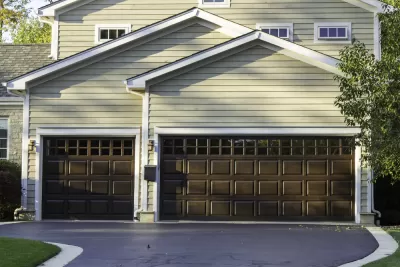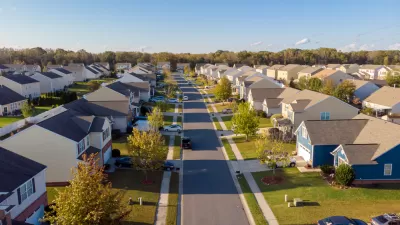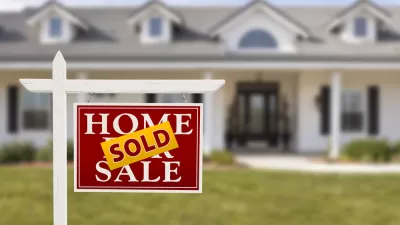As people perform more daily functions at home, homeowners and renters are seeking larger footprints to accommodate a broader range of uses.

Paul Bergeron reports that single-family homes in the U.S. are growing in size, "in part because of homeowners’ desire for more space in response to the virus crisis and the opportunity (or necessity) for working from home."
Median floor area grew between the first and third quarters of this year, and industry experts expect the figure to continue growing as people find themselves doing more of their routine tasks—work, school, entertainment—at home. Meanwhile, rental properties continue to see high demand as many potential homebuyers are priced out of the market. For many renters, Bergeron writes, expanded storage is an increasingly important preference.
According to a separate article by Tyler Wilkins, build-to-rent homes, particularly in suburban areas, are growing in popularity and attracting powerful investors as many households decide to opt for the flexibility, convenience, and lower monthly costs of rental homes. But some city officials fear that investors will buy up rental homes and charge excessively high rents, prompting some localities to issue a moratorium on new rental subdivisions. While the model holds the potential for predatory landlords, housing advocates argue that single-family rental homes fill a gap in an increasingly volatile housing market.
FULL STORY: Single-Family Home Sizes Have Been Trending Larger This Year

Manufactured Crisis: Losing the Nation’s Largest Source of Unsubsidized Affordable Housing
Manufactured housing communities have long been an affordable housing option for millions of people living in the U.S., but that affordability is disappearing rapidly. How did we get here?

Americans May Be Stuck — But Why?
Americans are moving a lot less than they once did, and that is a problem. While Yoni Applebaum, in his highly-publicized article Stuck, gets the reasons badly wrong, it's still important to ask: why are we moving so much less than before?

Using Old Oil and Gas Wells for Green Energy Storage
Penn State researchers have found that repurposing abandoned oil and gas wells for geothermal-assisted compressed-air energy storage can boost efficiency, reduce environmental risks, and support clean energy and job transitions.

Greening Oakland’s School Grounds
With help from community partners like the Trust for Public Land, Oakland Unified School District is turning barren, asphalt-covered schoolyards into vibrant, green spaces that support outdoor learning, play, and student well-being.

California Governor Suspends CEQA Reviews for Utilities in Fire Areas
Utility restoration efforts in areas affected by the January wildfires in Los Angeles will be exempt from environmental regulations to speed up the rebuilding of essential infrastructure.

Native American Communities Prepare to Lead on Environmental Stewardship
In the face of federal threats to public lands and conservation efforts, indigenous groups continue to model nature-centered conservation efforts.
Urban Design for Planners 1: Software Tools
This six-course series explores essential urban design concepts using open source software and equips planners with the tools they need to participate fully in the urban design process.
Planning for Universal Design
Learn the tools for implementing Universal Design in planning regulations.
Heyer Gruel & Associates PA
City of Moreno Valley
Institute for Housing and Urban Development Studies (IHS)
City of Grandview
Harvard GSD Executive Education
Salt Lake City
NYU Wagner Graduate School of Public Service
City of Cambridge, Maryland





























